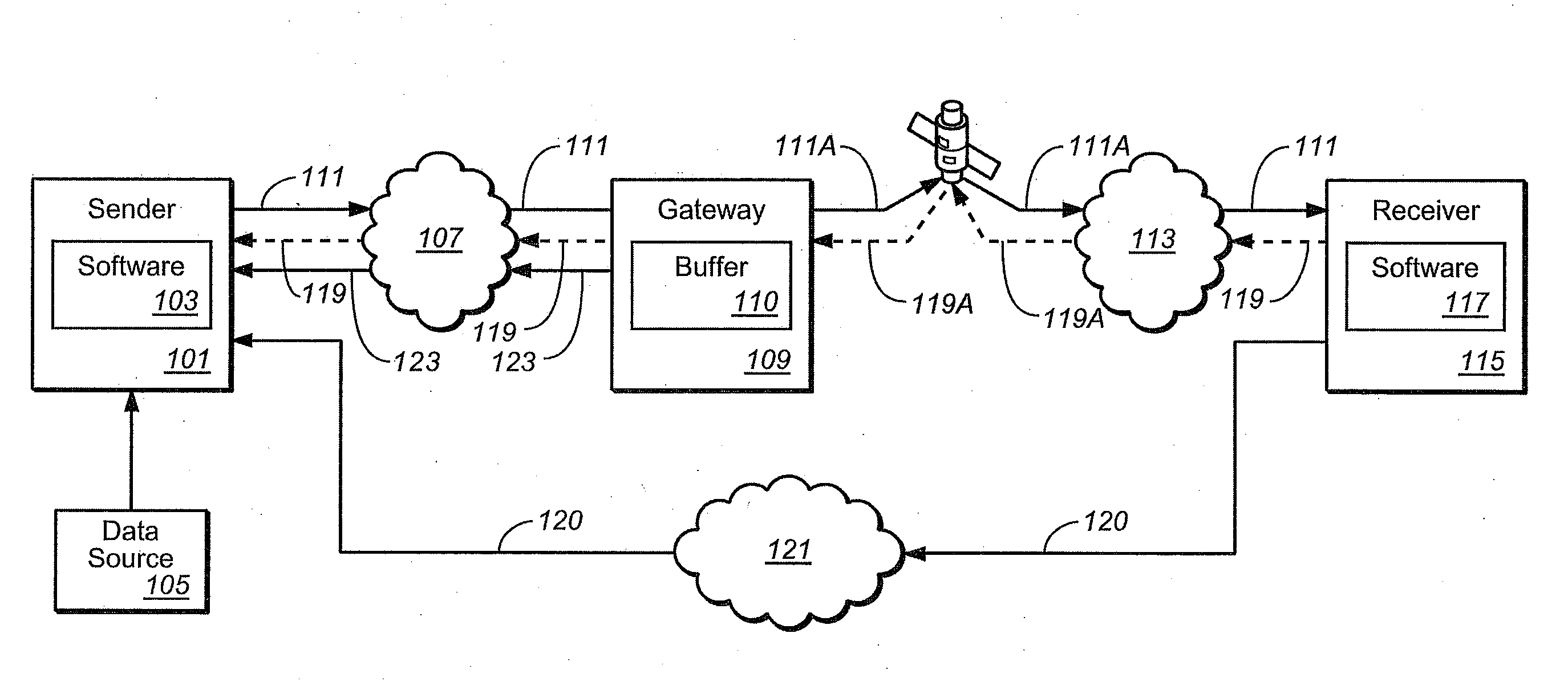Fault-tolerant data transmission system for networks with non-full-duplex or asymmetric transport
a data transmission system and network technology, applied in the direction of digital transmission, channel coding adaptation, error prevention, etc., can solve the problems of poor effective throughput under such asymmetric transfer conditions, datagram retransmission, etc., to minimize datagram drop and optimize data transfer rates
- Summary
- Abstract
- Description
- Claims
- Application Information
AI Technical Summary
Benefits of technology
Problems solved by technology
Method used
Image
Examples
Embodiment Construction
[0019]Enhancements to the current error-correcting-capable protocol take advantage of the controlled transmission rates under asymmetric transport conditions in several different ways, including by optimizing chapter size, controlling inter-chapter timing, and running on bare datagrams without internet wrapping overhead. Use of the forward error correction allows a sender unit to transport data in certain applications where it would otherwise be difficult in practice.
Chapter Size Optimizations
[0020]A first extension is to control the size of chapters (both number of datagrams and the size of datagrams) to allow it to work in greater harmony with the underlying transport equipment. Datagram size is controlled by channel maximum transmission unit (MTU) which may be a parameter of the Alien Transport. One implementation uses a 64×128 matrix in all cases.
[0021]For example, if it is determined that the datagrams must go through an intermediate gateway at each end, whereby the gateway eff...
PUM
 Login to View More
Login to View More Abstract
Description
Claims
Application Information
 Login to View More
Login to View More - R&D
- Intellectual Property
- Life Sciences
- Materials
- Tech Scout
- Unparalleled Data Quality
- Higher Quality Content
- 60% Fewer Hallucinations
Browse by: Latest US Patents, China's latest patents, Technical Efficacy Thesaurus, Application Domain, Technology Topic, Popular Technical Reports.
© 2025 PatSnap. All rights reserved.Legal|Privacy policy|Modern Slavery Act Transparency Statement|Sitemap|About US| Contact US: help@patsnap.com



